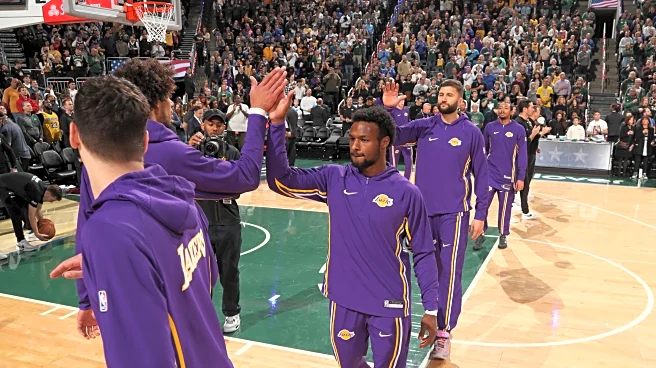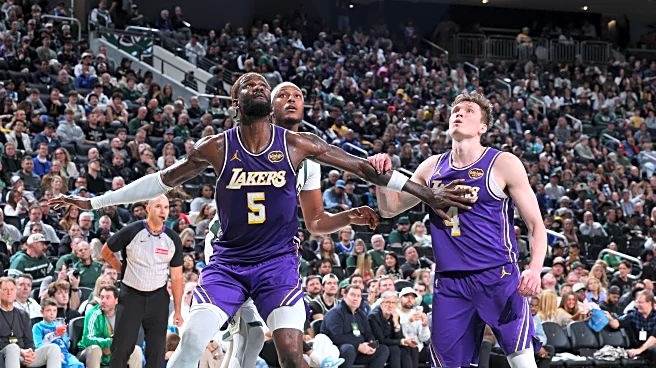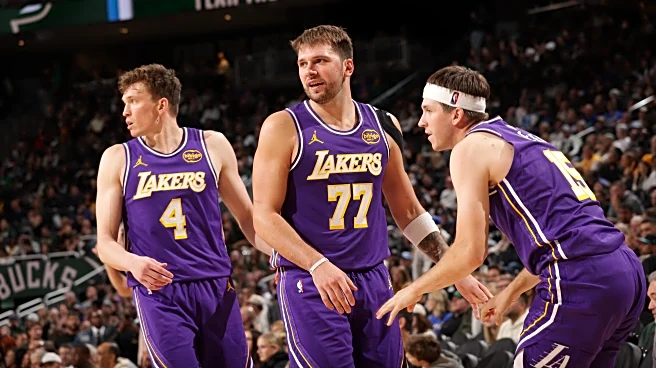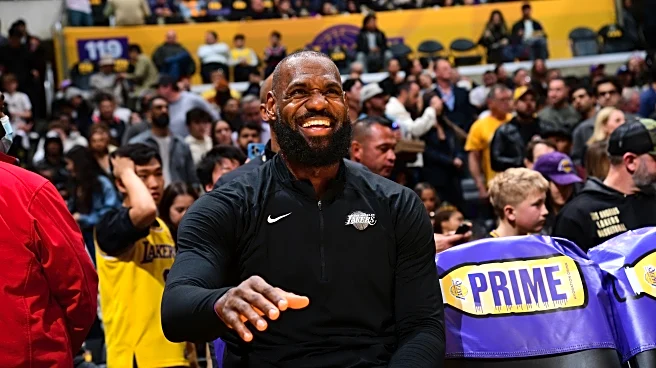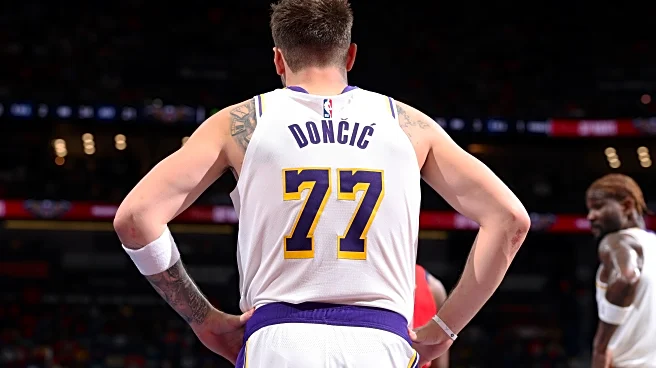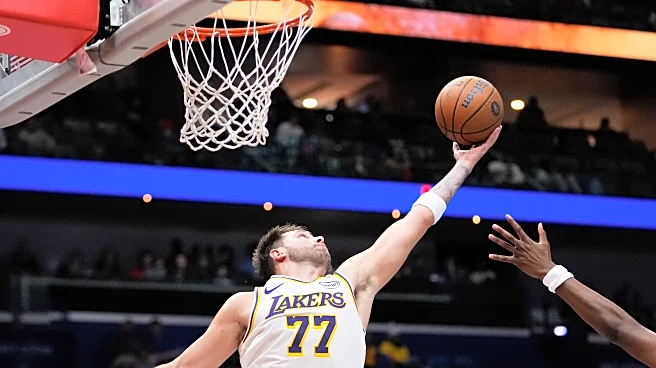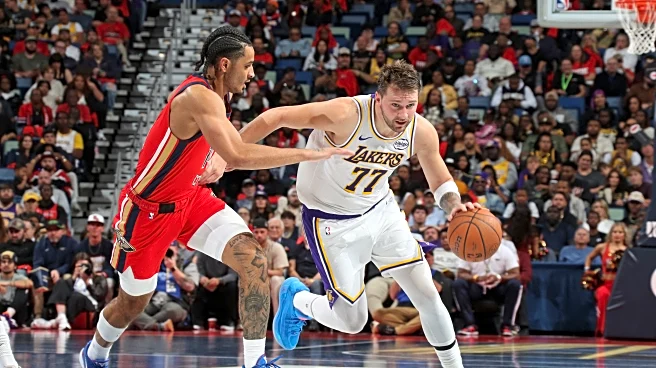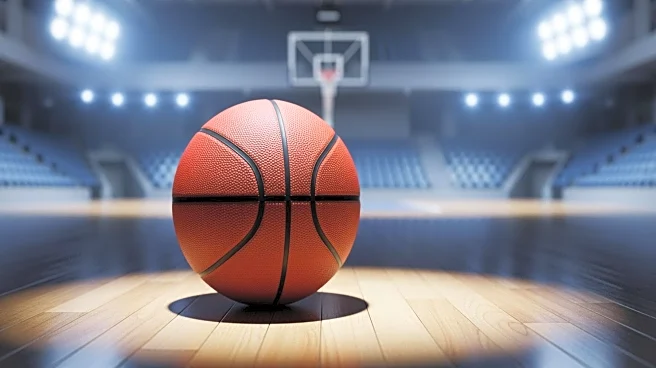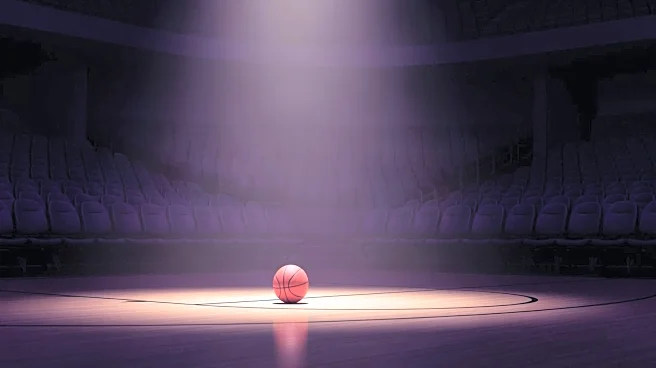For the first time in his 23 seasons, LeBron James missed opening night, sitting out due to the sciatica that had sidelined him through training camp and the preseason.
Rather than hearing his name called
by Lawrence Tanter and then doing his signature chalk toss before facing off against the Warriors, James sat in his elevated chair at the end of the Lakers bench in a black suit…and then was heavily scrutinized for his stone-faced non-reactions to nearly every play (good, and bad) that evening.
It was a reminder that James moves the needle whether he plays or not. His every action — or in this case, inaction — becomes fodder for the basketball (non)intelligentsia who understand the relationship between controversy and consumption.
Though to be fair to the media too, it was also a reminder that James can still influence the narratives of how he’s covered, particularly coming off his agent’s offseason’s comments on his behalf about the Lakers (possibly Luka Dončić-adjusted) timeline and Bron’s desire to compete for titles now, and then the additional reporting from right before the season that James would be watching closely to see how the team performed with him sidelined.
What James has watched while he’s been out with injury, though, should please him.
The Lakers have raced out to a 10-4 start, including going 7-2 on the road. They have the fourth-best record in the conference against the fifth-toughest strength of schedule, which includes wins over the Wolves, Bucks, and the (somewhat surprising) Spurs while dealing with injuries have cost Dončić, Austin Reaves, Gabe Vincent, Deandre Ayton, Marcus Smart, and Rui Hachimura games.
The Lakers ability to play to this level with Dončić and Reaves leading the way have actually turned the LeBron narrative on its head, going from questions of whether the team was good enough to compete even with him in the fold to those same prognosticators now proclaiming all the ways LeBron will need to adjust his game in order to fit into the dynamic the team has established without him.
It’s gotten to the point that it feels as though some are looking at LeBron’s pending return as a potential disruption to what the team has going rather than the type of additive move a player of his caliber returning actually is. I get that LeBron will be 41 in six weeks, but he’s still the player who finished sixth in MVP voting and was on the All-NBA Second Team last year.
In other words, if there’s a player who deserves the benefit of the doubt to continue to be an elite player even at this stage of his career, it’s LeBron.

Beyond the level he plays to, though, the more important aspect of the larger return narrative is about LeBron’s game itself and how he fits into a team that has not just one, but two high-usage shot creators who will have the ball in their hands a fair amount.
While I think some of these questions are fair, and will admit that I, too, see there being some adjustment from Luka and Austin as LeBron is reintegrated, I think it’s also too narrow a view to simply focus on who has the ball and how well they share possessions when thinking about all the ways LeBron can and will help the team.
From outside shooting to rebounding to passing to defense and, yes, to sharing ball handling and shot creation responsibilities, LeBron has a multi-faceted game that can be deployed in a myriad of ways to help any team.
First, offensively, his versatility is worth remembering and discussing further. While he remains a wonderful on-ball player who can serve as a shot creator from the perimeter, his off-ball work has consistently been one of the more underappreciated aspects of his game. He himself said he used this summer to work on his spot-up shooting as a way to be helpful to a team with both Dončić and Reaves being shot creators.
“I spent a lot of time on my catch-and-shoot 3-pointers…” LeBron said at media. “Understanding how can I make the most of when I don’t have the ball, either moving into space. Obviously, Luka and AR [Austin Reaves] going to do a lot of time handling the ball…We have a lot of guys that can handle the ball, so how can I still be effective on a team where I don’t have to handle the ball as much?”
Last season, LeBron shot 42% on his 205 catch-and-shoot 3-pointers and hit a combined 39.9% of his threes when “open” or “wide open” as classified by the NBA’s tracking data. In other words, LeBron is coming off a year in which his spotting up or being left open from behind the arc was already a dangerous proposition, so his investing even more time into this part of his game feels like just more of an already good thing.
Beyond the shooting, though, LeBron is also one of the NBA’s better cutters and finishers, particularly when working out of the opposite slot or the weakside corner. Few are better at reading when their defender is too locked in on the ball than LeBron and there are not many passers better than Luka at reading the weakside low-man, particularly when running the pick and roll.
In fact, these two already showed how lethal this sort of connection could be last season.
Moving beyond the half court, where LeBron can really help the Lakers is in transition. Last year, LeBron was fifth in the entire NBA in total transition points scored and for players with more than 300 transition possessions, LeBron’s field goal percentage of 66% ranked third while his effective field goal percentage of 71% was second.
In fact, this is one of the areas where Luka and LeBron synced up almost instantly with the former consistently finding the latter with deep outlet passes on run outs or simply hitting him on more traditional breaks. Luka is such an instinctive hit-ahead passer and LeBron has also always shown a great feel for how to get behind the defense where that sort of pass can turn into an easy two points.
On the other end of the ball, I believe LeBron can help the Lakers defensively, too. While it’s fair to say his effort can wax and wane from possession to possession, LeBron can still be incredibly disruptive when he is locked in defensively, not only as a playmaker who can both hunt steals in passing lanes and protect the basket as a shot blocker — both in the half court and via his patented chase downs in transition — but as someone who can serve as a wonderful team defender and an isolation stopper.
Last season, LeBron actually posted one of the best isolation defensive seasons ever, again showing that when his own man tries to attack him, he was more often than not up for the challenge and was able to get the stop.
And while we often talk about LeBron’s basketball IQ through the lens of how smart he is offensively, he is also brilliant as a defensive thinker, oftentimes diagnosing the opposition’s play call or their general plan of attack and then using his voice and communication skills to help his team get the collective stop. Combine this with what players like Marcus Smart and Ayton are already going in this area and the Lakers can potentially become a smarter and more effective team defense even if their personnel doesn’t experience a significant shift.
Ultimately, then, I think some of what LeBron’s return can mean is being overthought and not viewed through the proper lens.
Is there the possibility for some adjustment and even short-term pain while everyone gets used to playing together again? Of course. In fact, I would say it’s likely. But I think the bigger picture result will be a better Lakers team, and not just because they’re adding back a great player, but because some of the things this team needs are the exact thing LeBron naturally provides.
Whether it’s his work off the ball as a shooter or cutter, his on-ball work as a passer or shot creator — particularly from the elbows and post — or his defensive talk and ability to hold up in isolation, the Lakers can and will benefit from some of the best aspects of James’ game.
And to get those things back when the team has played this well without him should only be more encouraging and give the team more hope that they are only going to get closer to the contender they seek to be.
You can follow Darius on BlueSky at @forumbluegold and find more of his Lakers coverage on the Laker Film Room Podcast.


